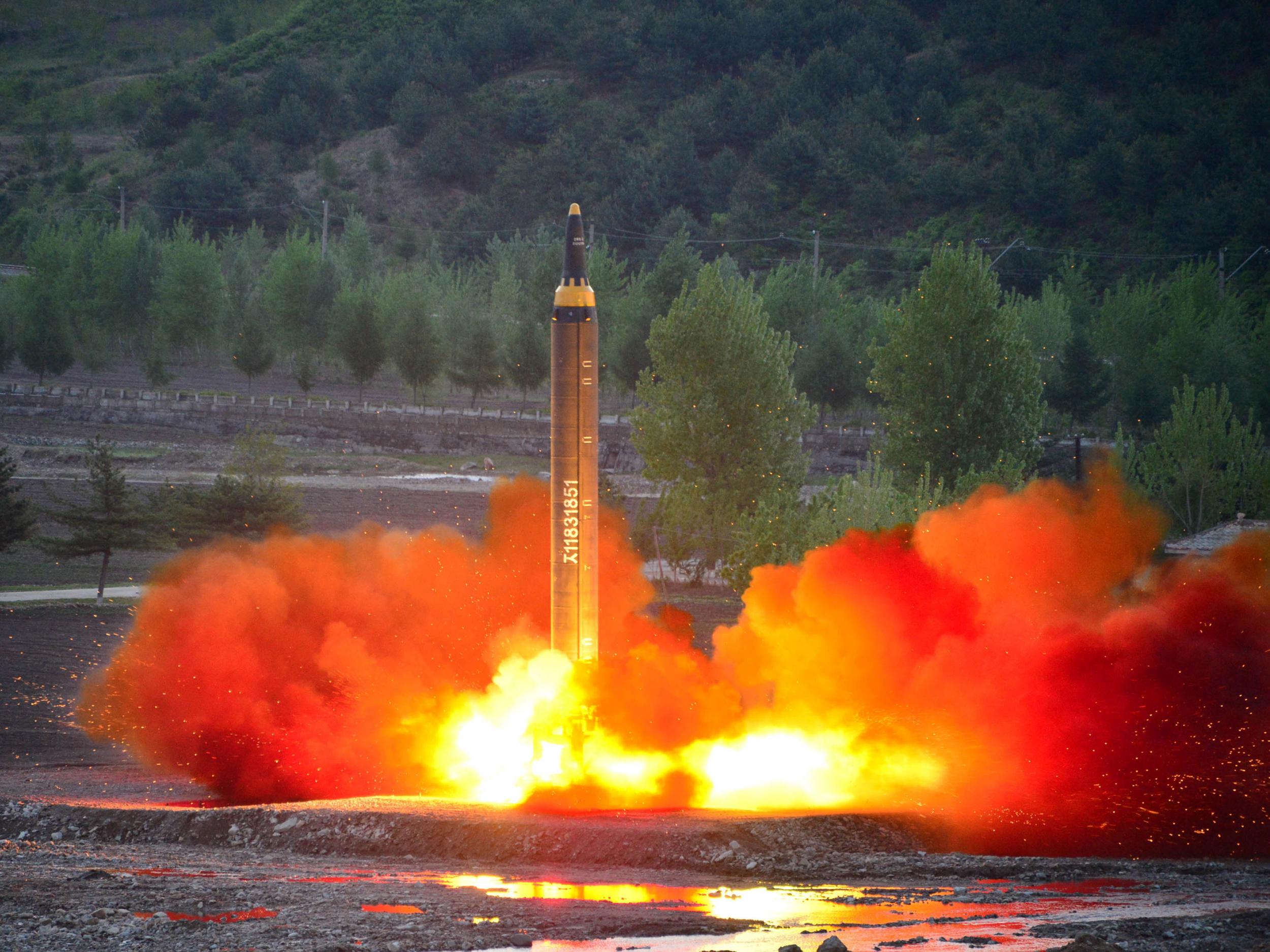North Korea’s latest ballistic missile most powerful yet and could reach Alaska and Hawaii
Pyongyang notorious for exaggerating capabilities in propaganda but experts believe most recent claims about Hwasong-12 rocket are accurate

Your support helps us to tell the story
This election is still a dead heat, according to most polls. In a fight with such wafer-thin margins, we need reporters on the ground talking to the people Trump and Harris are courting. Your support allows us to keep sending journalists to the story.
The Independent is trusted by 27 million Americans from across the entire political spectrum every month. Unlike many other quality news outlets, we choose not to lock you out of our reporting and analysis with paywalls. But quality journalism must still be paid for.
Help us keep bring these critical stories to light. Your support makes all the difference.
North Korea's latest ballistic missile test may be nearly as big a deal as the country's propaganda machine claims.
Although outside experts see several places where North Korea is likely stretching the truth, the missile launched Sunday appears to be the most powerful the country has ever tested. Some analysts believe the missile, if proven in further tests, could reach Alaska and Hawaii if fired on a normal, instead of a lofted, trajectory.
There's also a political victory for North Korea. The test gives a boost to leader Kim Jong-un as he seeks to show his people that he's standing up to America and South Korea. And it also lifts scientists in the authoritarian nation who are working to build an arsenal of missiles with nuclear warheads that can reach the US mainland. They're not there yet, but tests like this are the nuts and bolts a successful weapons programme needs.
Here's a closer look at what happened in Sunday's missile launch, which came only a few days after the inauguration of a new South Korean president, and why it's viewed as a worrying development by North Korea's neighbours and Washington.
Even before North Korea gave its account of what happened, the launch caught the eye of experts.
Tokyo clocked the missile as travelling about 800 kilometres (500 miles) and reaching a height of 2,000 kilometres (1,240 miles) during its half-hour flight.
That is a higher altitude and longer flight time than any other missile the country has test-launched, according to several South Korean analysts reached by The Associated Press.
North Korea's state media generally confirmed those estimates. It said the newly developed Hwasong-12 flew as high as 2,111 kilometres (1,310 miles) before landing in a targeted area in the ocean about 787 kilometers (490 miles) from the launch site.
North Korea said it fired the missile at a high angle to avoid neighbouring countries.
If it had been fired at a normal angle, analysts say, it could have flown much farther — estimates vary between 4,000 and 7,000 kilometres (2,500 and 4,350 miles), the upper number putting Alaska and possibly Hawaii within striking distance.
“This is a very uncomfortable development for the United States,” said Lee Illwoo, a Seoul-based commentator on military issues.
Before Sunday's launch, an intermediate-range missile called Musudan was thought to have the longest potential range among the missiles that North Korea has test-fired — about 3,500 kilometres (2,180 miles). That could strike US military bases in Guam. During a 2016 test, the Musudan reached a height of 1,410 kilometres (880 miles).
In recent years, North Korea successfully put satellites into orbit twice aboard long-range rockets in what the UN called a disguised test of long-range missile technology. But the country has never carried out test flights of those rockets' military versions.
Outsiders express more scepticism about North Korea's nuclear warhead claims.
North Korea says the missile can carry a heavy nuclear warhead. It also claims to have perfected the warhead's homing and detonation systems under difficult re-entry circumstances.
As with much of North Korea's secretive arms programme, this couldn't be independently confirmed.
But experts have long believed that manufacturing a compact warhead for a long-range missile capable of striking the United States is one of the last remaining technologies North Korea has yet to master.
Some experts say the missile's claimed ability to carry heavy warheads would allow North Korea to deploy larger bombs or multiple warheads potentially capable of striking different targets.
There's also scepticism about North Korea's claims about its re-entry technology, which is needed to return a warhead to the atmosphere from space so it can hit its intended target.
Despite North Korea's claim that Sunday's test simulated a re-entry situation, South Korean defence officials say the North probably has yet to master the technology.
“There is enormous pressure when a missile re-enters the atmosphere... If (electrical) circuits break and a trigger device fails to detonate nuclear fuel, you can imagine that only some twisted metal will fall on Alaska or Hawaii, even if North Korea fires missiles at them,” said Kim Dong-yub, an analyst at Seoul's Institute for Far Eastern Studies.
Another important point: One test, even a successful one, does not completely prove a missile's capabilities.
A reliable missile must endure at least 10 successful test launches, according to Professor Chae Yeon-seok at South Korea's University of Science & Technology.
Copyright Associated Press
Subscribe to Independent Premium to bookmark this article
Want to bookmark your favourite articles and stories to read or reference later? Start your Independent Premium subscription today.
Join our commenting forum
Join thought-provoking conversations, follow other Independent readers and see their replies
Comments